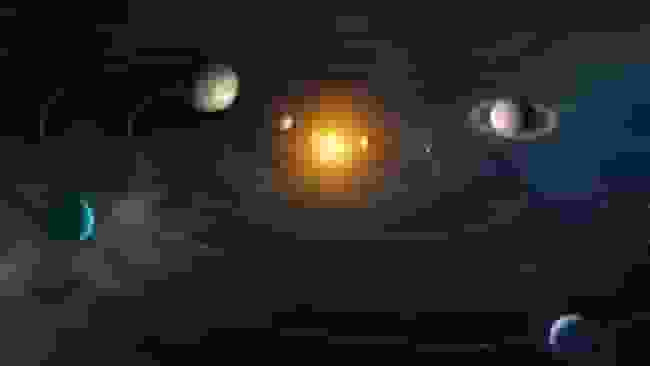
Throughout billions of years, Earth and its neighbors in space have moved through an amazing dance that has been going on around the sun, which gives life. (Photo: English Plus)
Cosmic Time Capsule: An Overview of Planetary Orbits
Over the course of billions of years, Earth and its neighbors in space have moved through an amazing dance that has been going on around the sun, which gives life. This amazing discovery comes from a new study of how the planets in our solar system move around in their orbits. The data that was collected shows the unimaginable number of orbits each planet has made around our star, which sheds light on the huge amount of time and development that these celestial motions contain.
The story spans thousands of years, starting with the formation of the solar system about 4.6 billion years ago, which marked the beginning of the sun and its planets. A time when the young planets bumped into each other a lot caused a time of dynamic instability that changed the shape of the orbits in the early solar system. But after this cosmic earthquake was over, the planets settled into a smooth waltz around the sun, a dance that would last for thousands of years.
When you look at the details, Mercury is the fastest-moving planet in this group of planets; it only takes 88 days for Mercury to make one circle around the sun. Based on an amazing math problem, over the 4.5 billion years that Earth has been around, Mercury has made an amazing 18.7 billion trips like this. On the other hand, Neptune, which is heavy and lives on the cold edges of our galaxy, has only made about 27.9 million orbits in its 4.59 billion years of life. This shows how different planets’ rotational paths are.
READ ALSO: NASA’s Voyager 1 Spacecraft Encounters Glitch, Earth Connection Compromised
The Unfathomable Journey of Earth and Its Galactic Kin
These huge numbers lead to a sobering realization: these space tourists may see their journeys double in the billions of years left until the sun expands and turns into a red dwarf star, which will happen in about 4.5 billion years. An event of this magnitude would be the end of Mercury, Venus, and Earth. The other planets would continue their eternal journey through space.
The discovery of these cosmic numbers is a powerful reminder of how time goes by so quickly and how the story in the sky continues even after we die. As Earth and its galaxies continue their cosmic dance, our new knowledge of their many solar circuits provides a glimpse into the epic story of how the solar system has changed over unbearably long periods.
Inspiring information about how planets move around our sun gives us a deep look into the complicated tapestry of our universe’s past. It shows how celestial bodies have been dancing around our sun for unimaginable ages.
READ ALSO: Space Explorers’ Epic Journeys: From Moon To Everest To The North Pole




![Tyson Foods Plant [Photo: Food Manufacturing]](https://southarkansassun.com/wp-content/uploads/2023/08/iStock_1185520857__1_.5e441daa51cca-600x337.jpg)








![Silverado Senior Living Management Inc. [Photo: Los Angeles Times]](https://southarkansassun.com/wp-content/uploads/2023/10/download-6-4-600x337.jpg)

![China's Wuhan Institute of Virology [Photo: Nature]](https://southarkansassun.com/wp-content/uploads/2023/09/d41586-021-01529-3_19239608-600x337.jpg)















